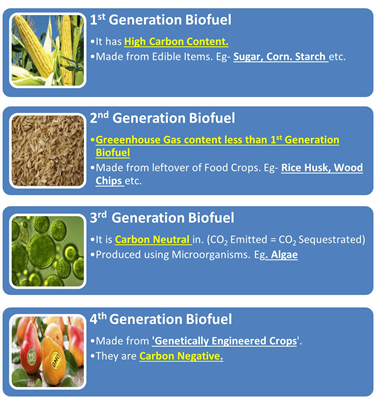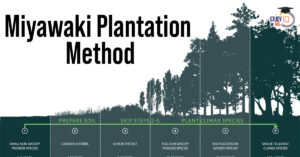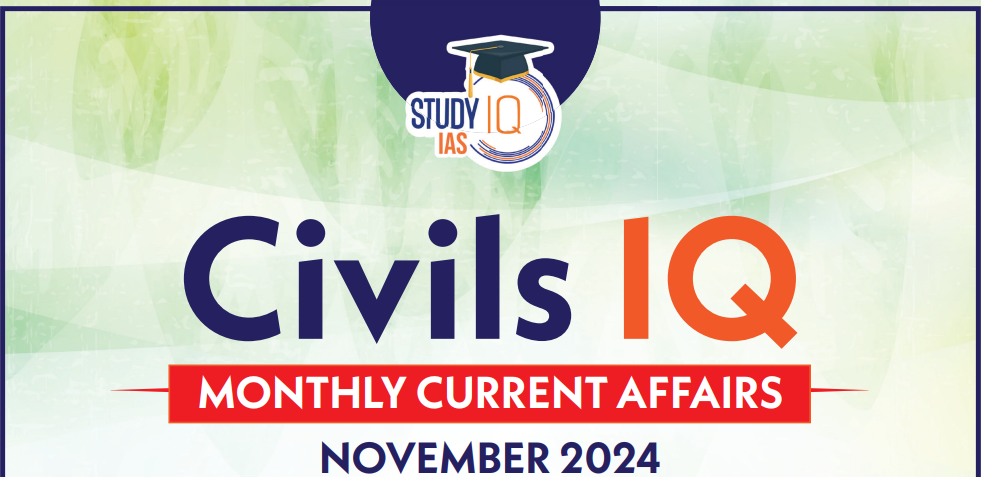Table of Contents
The Ministry of Consumer Affairs, Food and Public Distribution directed all mills and distilleries not to use sugarcane juice/syrup for making any ethanol “with immediate effect”. India is on its way to achieving its target of blending 20% of petrol with ethanol by 2025-26.
What Is Ethanol?
Ethanol (chemical formula: C2H5OH) is a type of alcohol produced by fermenting sugars found in plants. It can be used as a fuel source or an additive in other products.
- It is a clear, colourless, and flammable liquid. It is also known as Ethyl Alcohol (C2H5OH)
- Ethanol is produced through the fermentation of sugars by yeast or other microorganisms.
- Once blended, ethanol cannot be separated from the petrol.
- As the ethanol molecule contains oxygen, it allows the engine to more completely combust the fuel, resulting in fewer emissions and thereby reducing the occurrence of environmental pollution.
- It has a higher octane number than gasoline, hence improving the petrol octane number.
Ethanol Blending Programme (EBP)
Ethanol blending refers to the process of mixing a motor fuel with ethyl alcohol(ethanol), which will be 9% pure alcohol and sourced from agricultural products, exclusively with gasoline.
Objectives of the EBP
- Reducing the country’s dependence on crude oil imports
- Conserving foreign exchange
- Boosting the domestic agriculture sector
- Increasing value addition in the sugar industry.
Advantages of Ethanol Blending
|
Advantages of Ethanol Blending |
| Reduced reliance on fossil fuels: Biofuels decrease dependence on limited and polluting fossil fuels, lowering greenhouse gas emissions and mitigating climate change.
For example: Grain-based ethanol cuts greenhouse gas emissions significantly by 44 to 52% compared to gasoline, according to the US Department of Energy’s Argonne National Laboratory. |
| Renewable energy source: Biofuels are grown from renewable crops, ensuring long-term energy availability, unlike finite fossil fuels. |
| Support for agriculture: Biofuel crops create a new market for farmers, boosting rural economies and providing additional income. |
| Technological advancement: Research in biofuel technologies drives innovation in the renewable energy sector, leading to further advancements. |
Generations of Biofuels

Challenges Associated with Ethanol Blending
- Production Challenges: The government’s target to achieve 20% ethanol-blended petrol by 2024-25 is facing setbacks due to restrictions on ethanol production from sugarcane juice in 2023-24.
- This has led to a projected decline in domestic ethanol production by 20%, potentially reducing the ethanol blending rate to less than 10% in the ethanol supply year 2023-24, compared to 12% in the previous year.
- Vehicle Compatibility: Vehicles in India are currently designed for E0 and calibrated for E10 (10% ethanol blend). Using E20 (20% ethanol blend) may result in a loss of fuel efficiency – approximately 6-7% for four-wheelers and 3-4% for two-wheelers.
- Modifications in engines are required to reduce this efficiency loss.
- Moreover, the use of E20 will necessitate changes to the fuel lines, as well as some plastic and rubber parts, due to the corrosive nature of the fuel.
- The engines will also need to be recalibrated for the required power, efficiency, and emission-level balance due to the lower energy density of the fuel.
- Impact on Emissions: There are concerns regarding unregulated emissions such as acetaldehyde, which could be higher with E10 and E20 compared to normal petrol.
- The overall impact on emissions, both regulated and unregulated, needs careful monitoring and assessment as India progresses towards higher ethanol blending.
- Potential for food scarcity: Diverting crops for fuel can reduce food availability, leading to higher prices and food insecurity.
- The increase in the manufacturing of food-based raw materials for ethanol production could impact food security. This concern is heightened given India’s ranking on the World Hunger Index 2021.
- Competition for land: Biofuel crops can compete with food production and conservation needs, potentially leading to land-use changes and biodiversity loss.
- Minimum Support Price: Ethanol production costs in India are higher compared to countries like the U.S. and Brazil. This is partly due to the government-fixed cost of raw materials like sugarcane and food grains, which are set to support farmers. This policy impacts the economic viability of the Ethanol Blending Programme (EBP).
| Government Efforts To Advance Ethanol Blending In India |
|
We’re now on WhatsApp. Click to Join
Way Forward
- E20 Mission for Fuel Independence: India’s aim to lessen its dependency on fuel imports through the E20 initiative is commendable, but the 2025-26 target is ambitious.
- Competition for Resources: Achieving this goal may lead to a clash for crop and land resources between fuel and food crops, necessitating a balanced approach.
- Addressing Undernourishment: With a significant undernourished population, India needs to expand the cultivation of pulses, oilseeds, and horticultural crops.
- Focus on Agricultural Productivity: Enhancing crop yields through advanced seeds and farming techniques is crucial, especially if these crops are used for biofuel production.
- Land-Use Planning: A strategic plan for land use is vital to avoid dedicating existing croplands to fuel production, considering the decline in arable land in India.
- Utilising Fallow Land: Prioritising the use of the increased fallow land, around 4.3 million hectares between 1978-79 and 2018-19, for biofuel crop production could be a solution.
- Second Generation (2G) Biofuel Technologies: These technologies, which use waste materials like wheat straw, corn cobs, wood, and agricultural residues for bioethanol production, should be further researched and developed for commercial viability.
- Avoiding Food vs. Fuel Dilemma: The roadmap should ensure no trade-off between achieving food and energy security, as both are equally important.


 Need Policy for Affordable Bioethanol
Need Policy for Affordable Bioethanol
 Canopy Bridges for Gibbons and Hoollonga...
Canopy Bridges for Gibbons and Hoollonga...
 Miyawaki Method of Plantation and its Be...
Miyawaki Method of Plantation and its Be...


















